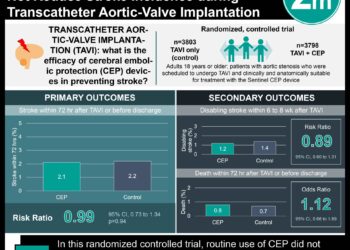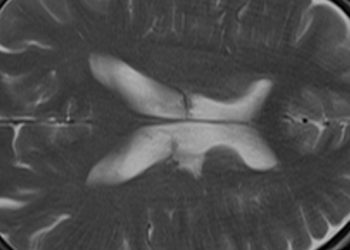2 Minute Medicine Rewind October 10, 2022
1. Compared to women who had pregnancies conceived from in vitro fertilization (IVF), women who conceived from frozen embryo transfer (FET) cycles had more prevalent and severe nausea and vomiting.
2. Estrogen and progesterone may play a role in nausea and vomiting, however those in the FET group had lower hormone levels than those in the IVF group, suggesting various other factors involved.
Evidence Rating Level: 2 (Good)
70-80% of pregnant women are affected by nausea and vomiting, with the mechanisms being unknown but multifactorial in nature, including the role estrogen and progesterone. Estrogen causes downstream effects such as delaying of gastric emptying, and previous studies have found that women with hyperemesis of pregnancy have higher levels of estradiol. Progesterone can also reduce smooth muscle contraction, resulting in decreased gastric emptying. The additive effects of both hormones are demonstrated by increased gastric slow wave rhythm. Pregnancies can be achieved via assisted reproduction in two ways, either through stimulated in vitro fertilization (IVF) or frozen embryo transfers (FET). In IVF cycles, the ovaries are stimulated resulting in estradiol levels higher than FET cycles, whereas FET cycles have hormone levels are closer to physiological ranges. To further characterize whether or not IVF or FET pregnant women would have different outcomes on nausea and vomiting, 360 women were recruited in this prospective study, with 171 undergoing IVF and 189 undergoing FET. These women were carrying singleton pregnancies with no previous gastric issues. The patients were screened between 6 and 12 weeks gestation and asked to fill out the modified Pregnancy Unique Quantification of Emesis and Nausea (PUQE) questionnaire. This index included the amount of time the subjects felt nauseated, how often they vomited and how often they retched or dry heaved. During weeks 11 and 12 of gestation, significantly more women felt nauseated in the FET group (p value = 0.032 for week 11 and p value = 0.046 for week 12). In weeks 7 and 8, significantly more women in the FET group had longer duration of nausea (p value = 0.044 for week 7 and p value = 0.030 for week 8) and during week 6, significantly more women in the FET group had more vomiting in a day. These results were not consistent with the initial hypothesis of higher hormone levels correlating with more nausea and vomiting, suggesting many other factors such as multiparity, levels of beta-human chorionic gonadotropin levels and age impacting nausea and vomiting of pregnancy. This study was limited in its potential for recall bias, as well as lack of measuring blood levels of hormones in the two groups. Further studies are needed to further investigate the relationship between hormone levels and nausea and vomiting as well as other factors that may contribute.
1. Hospital length of stay did not differ for children who received early steroids for COVID without non-multisystem inflammatory syndrome compared to those who did not receive early steroids
Evidence Rating Level: 2 (Good)
Although most children affected by COVID only suffer from mild illness, severe cases that confer significant mortality and morbidity have certainly been described. Due to its lower relative incidence however, there lacks substantial literature covering therapeutic options for severe cases. Currently, there have been management principles of treating multisystem inflammatory syndrome (MIS-C) applied to the treatment of severe COVID. This typically includes IV immunoglobulins as well as steroids, which in adult studies, have found modest effect. While COVID-19 illness can be associated with MIS-C, severe, non-MIS-C COVID-19 can certainly manifest as well. There has been a lack of past data that have directly examined the therapeutic effect of these treatments for non-MIS-C COVID infections in children, and as such, their benefits and risks are currently poorly characterized. This retrospective cohort study sought to address this gap by comparing pediatric patients hospitalized with non-MISC-COVID-19 (either confirmed with lab confirmation or high clinical suspicion) who received steroids on or before day 2 of hospital admission to those who received steroids after day 2. Length of stay was the primary outcome, with secondary outcomes including nosocomial bacterial infection, ventilator or inotrope requirement by 2 or later, number of days on inotropes, fever defervescence by day 3 and inflammatory markers. In total, the final cohort included 1163 patients from 58 different hospitals, 184 received steroids within 2 days of admission and 979 did not. Steroid treatment within the first 2 days of hospital admission was not significantly associated with length of stay (exponentiated coefficient, 0.94; 95% CI, 0.81-1.09; P = .42). Secondary outcomes also showed no significant associations, however were difficult to complete sophisticated analyses on due to low numbers. Hospital stay is influenced by many factors, making it difficult to determine the benefit or harm of steroid treatment. Preliminary studies here however, demonstrate that the treatment principle of early glucocorticoid administration in MIS-C may not be directly applicable to the treatment of non-MIS-C COVID infections, though this requires further exploration in future studies.
Associations Between Life-Course Lipid Trajectories and Subclinical Atherosclerosis in Midlife
1. Future cardiovascular disease risk may be predicted by lifetime lipid levels beginning in early childhood.
2. Optimizing lipid levels throughout childhood and across the lifespan may help in reducing cardiovascular risk.
Evidence Rating Level: 2 (Good)
Atherosclerotic cardiovascular disease has several risk-factors, with dyslipidemia being a well established one. There has been evidence suggesting that the process of atherosclerosis can begin in childhood and can persist into adulthood, and that identifying this risk factor and intervening in childhood may reduce future cardiovascular risk. This retrospective study aimed to examine lipid trajectory patterns from young childhood on to midlife, and correlate their associations with subsequent cardiovascular disease risk. This retrospective cohort study followed 1201 patients for a median follow-up time of 36.8 years of which they received a range of 4 to 16 measurements of lipids including total cholesterol (TC), non–high-density lipoprotein cholesterol (non-HDL-C), low-density lipoprotein cholesterol (LDL-C), high-density lipoprotein cholesterol (HDL-C), and triglycerides (TG). These tests were done every 2-3 years, using venous blood samples after fasting for 12 hours. The outcome of interest was subclinical atherosclerosis measured by carotid intima-media thickness (IMT). Carotid artery exam was done in adulthood. Levels of TC, non-HDL-C, LDL-C and log-TG were all significantly positively associated with adult IMT. Levels of HDL-C at all ages were significantly negatively associated with IMT. Group-based trajectory modeling was used to identify 5 discrete trajectories from ages 5 to 45 for all the lipid variables. After adjusting for many factors including race, sex, age, BMI, lipid lowering medication, hypertension, diabetes, smoking and alcohol, it was found that adult IMT were significantly higher in the low-slow increase (those who had low lipid levels and had a slow increase around the age of 12), low-rapid increase (starting with low levels and a rapid increase around the age of 12) and high stable groups (those who maintained high lipid levels throughout), with the high stable group having significantly higher levels of carotid IMT than the low-slow increase group (mean difference, 0.107 mm; 95% CI, 0.018-0.196 mm) and the moderate stable group (mean difference, 0.113 mm; 95% CI, 0.018-0.207 mm). No significant differences were seen in adjusted mean values of adult IMT among all HDL-C trajectory groups. These results emphasize the importance of early optimization of lipid levels in childhood for long term cardiovascular event risk reduction. Those who started with low lipid levels and had an increase also had higher adult IMT, indicating that changes in lipid levels have an impact on development of atherosclerosis. The longitudinal aspect of this study allows for the unique ability to associate lipid levels at various age points as well as trajectory patterns throughout the lifespan. The study however, only had a biracial cohort of black and white participants and did not have a sufficient sample size to analysis by subgroup. Overall, this study found that lipid levels in childhood as well as certain trajectories of lipids are associated with subclinical atherosclerosis in middle age, with future longitudinal studies with multiple ethnic groups to help generalize these understandings. Additionally, screening for changes in lipid profiles at an earlier age may help prevent cardiovascular disease in middle age.
Association between serum vitamin C and HPV infection in American women: a cross-sectional study
1. Though not statistically significant, there was a U-shaped found between vitamin C levels and HPV infection risk, with women having inadequate, or saturated levels of vitamin C sharing higher HPV risk.
Evidence Rating Level: 2 (Good)
Human papillomavirus (HPV) is incredibly common. Many types of HPV infection can be cleared by one’s immune system, but persistent HPV infection is associated with more than 5% of cancers. Three successful HPV vaccines currently exist, but challenges remain in the prevention of HPV infection. Vitamin C is an important natural nutrient, that is known to prevent, shorten and alleviate a variety of infections. Previous studies have found that dietary vitamin C was negatively associated with the risk of persistence of HPV infection, with another study finding that low dietary vitamin C was associated with a higher risk of HPV infection. This cross-sectional study was the first to examine the relationship between vitamin C levels and HPV infection in larger samples, predicting that vitamin C may have a protective role against cervicovaginal HPV infection. 2174 women between the ages of 18-59 years were enrolled in the study. Serum vitamin C was collected and measured, and HPV infection was measured by extracting HPV DNA from vaginal swabs that were self-collected. Other factors considered were age, race, education, marital status, poverty income ration, health condition, health insurance, alcohol consumption, first age participating in vaginal, anal or oral sex, BMI and levels of various other vitamins. After adjusting for these factors, it was found the relationship between vitamin C and HPV infection was nonlinear, and rather showed a U-shape curve. In women under 25, vitamin C levels had no association with HPV infection, and in women older than 25, there was a negative association with HPV infection, perhaps related to a higher prevalence of HPV infection and higher rates of auto clearance in those under 25 years of age. Overall, no significant association was found with HPV infection and serum vitamin C levels (OR 0.998; 95% CI 0.994–1.001). The lowest risk of HPV infection was found when vitamin C levels were approximately 69.5 µmol/L. When vitamin C levels were above or below this level, an increased risk was seen, suggesting a U-shaped curve. This study did find some association between adequate vitamin C levels and HPV infection for those between the ages of 25-59, though these results were not significant. Future studies are needed to associate the relationship between vitamin C and HPV persistence, as well as to further characterize the biochemical mechanisms of how vitamin may serve a protective role against HPV infection.
1. Ultra-processed food consumption by mothers during child rearing period was found to be associated with an increased risk of obesity/overweight in offspring, independent of maternal and offspring lifestyle risk factors
Evidence Rating Level: 2 (Good)
Childhood obesity is a common and rising concern in the United States, with an increase from 10.2%, 5.2% and 1.0% from the 1970s to 16.1%, 19.3% and 6.1% in 2017/18 in the prevalence of overweight, obesity and severe obesity respectively in those aged 2-19. Current evidence has shown that ultra-processed food is linked to excess body fat in overweight, excess body fat, and obesity in children and adults. This study examined the effects of maternal ultra-processed food consumption during the peri-pregnancy period and child rearing period (age 7-18 years) and the effect on offspring obesity. The final cohort in this study included 19 958 mother-child pairs (with 2925 pairs having both peri-pregnancy and child rearing data) who participated in the Nurses’ Health Study II (NHS II), a study enrolling female registered nurses aged 25-42 at the time of establishment in 1989, and the Growing Up Today Study (GUTS I and II), a study which was established in 1996 in which children of NHS II participants were enrolled. Food items were classified by the NOVA food criteria, and body mass index was calculated for each of the children using self-reported weight and height measurements, with specific instructions to obtain these measurements. Covariates in this study included maternal risk factors such as race, body mass index, total energy intake, chronic diseases, gestation age and pregnancy complications. Offspring covariates were age, sex, ultra-processed food intake, physical activity and sedentary time. Offspring were followed until the onset of overweight/obesity, loss to follow-up or the age of 18 years, depending on which occurred first. A subsample analysis of peri-pregnancy consumption of ultra-processed food was also conducted. As maternal ultra-processed food consumption increased, consumption of ultra-processed food in offspring also increased, with a decrease in the overall quality of offspring diet. A 26% higher risk of overweight or obesity in offspring was seen in the group with highest maternal ultra-processed food consumption, compared to the group with lowest consumption (relative risk 1.26, 95% confidence interval 1.08 to 1.47, P for trend<0.001) even after controlling for established risk factors for obesity (maternal body mass index, physical activity, smoking, offspring ultra-processed food consumption and activity levels). Peri-pregnancy consumption of ultra-processed food was not significantly associated with increased risk of overweight or obesity in offspring. Both these associations were similar across various risk profiles. A large cohort was used in this study, with long term follow-up, though there were still some limitations to this study. Specifically, not all risk factors could be adjusted for and self-reported weight and height are subject to misreporting. Additionally, some offspring were lost to follow-up. Mothers were also predominantly white, with similar personal backgrounds, making it difficult to generalize these results. Previous studies have shown that maternal diet during child rearing periods has an impact on offspring’s diet and lifestyle. This study however showed a positive correlation between maternal ultra-processed foods and offspring obesity independent of offspring lifestyle factors, suggesting there may be other mechanisms impacting offspring weight. Further studies are needed to understand these specific mechanisms as well as the effect of various interventions to further quantify the relationship between maternal ultra-processed food consumption and health of their children, perhaps helping to guide dietary recommendations.
Image: PD
©2022 2 Minute Medicine, Inc. All rights reserved. No works may be reproduced without expressed written consent from 2 Minute Medicine, Inc. Inquire about licensing here. No article should be construed as medical advice and is not intended as such by the authors or by 2 Minute Medicine, Inc







